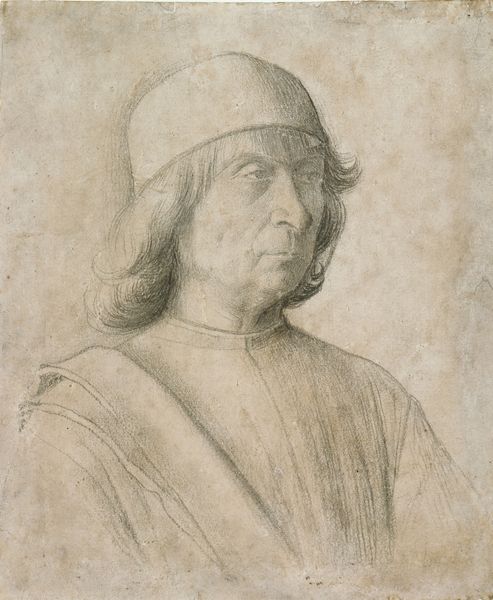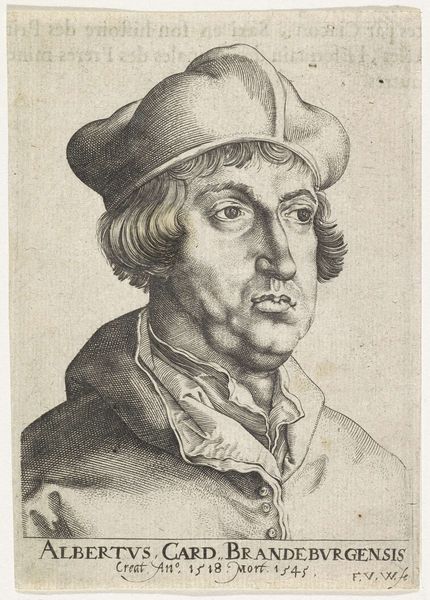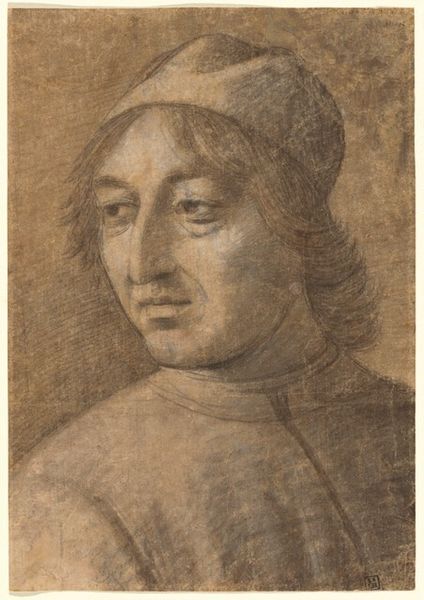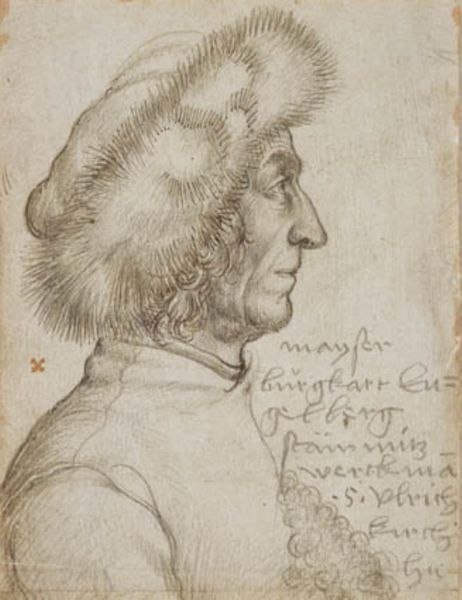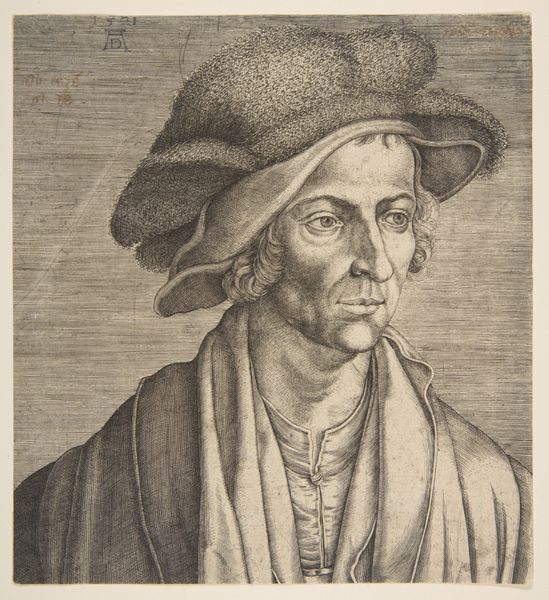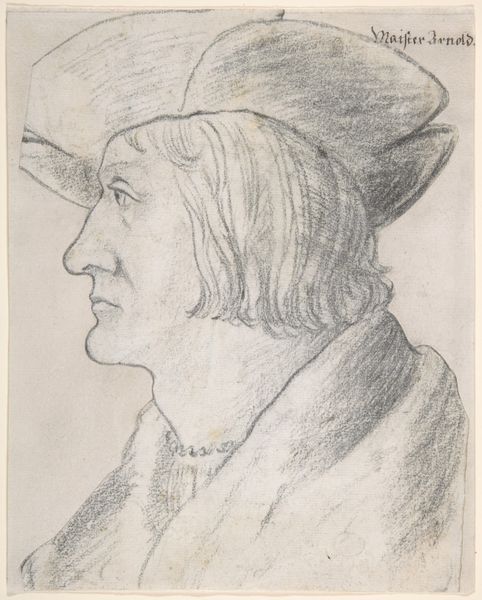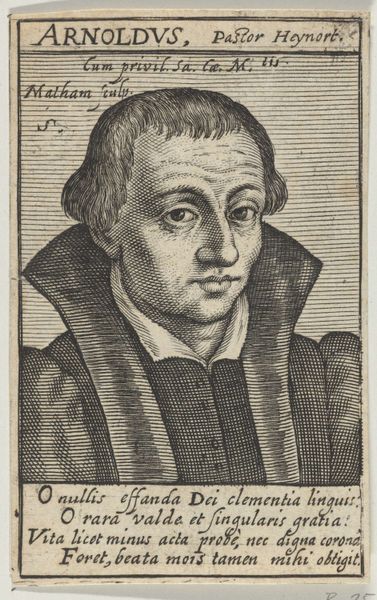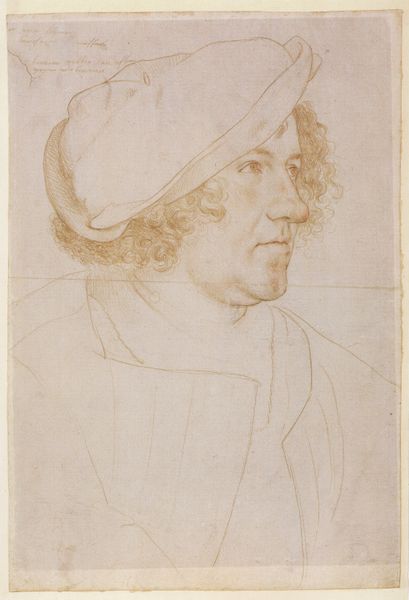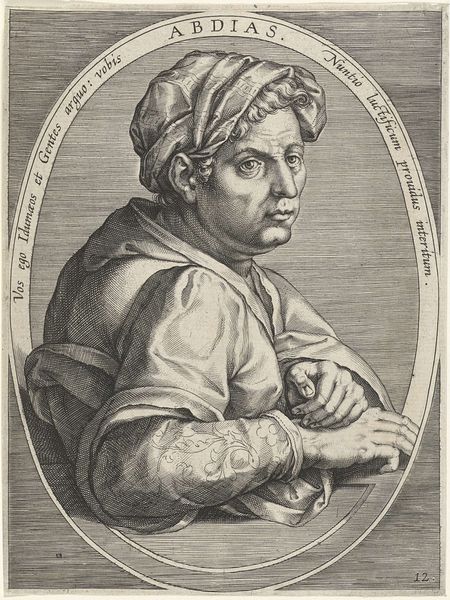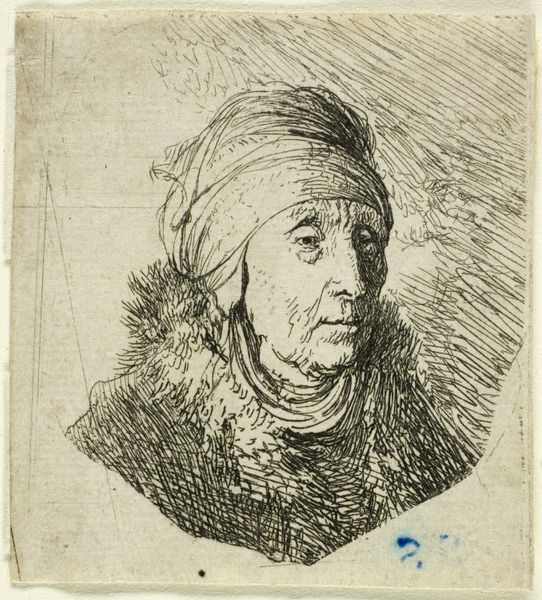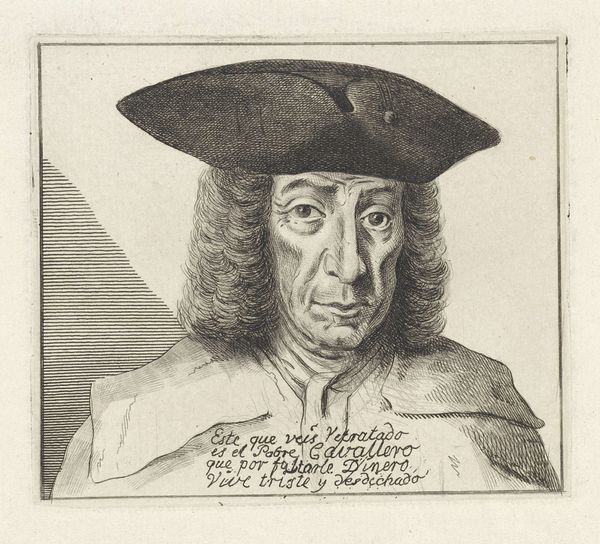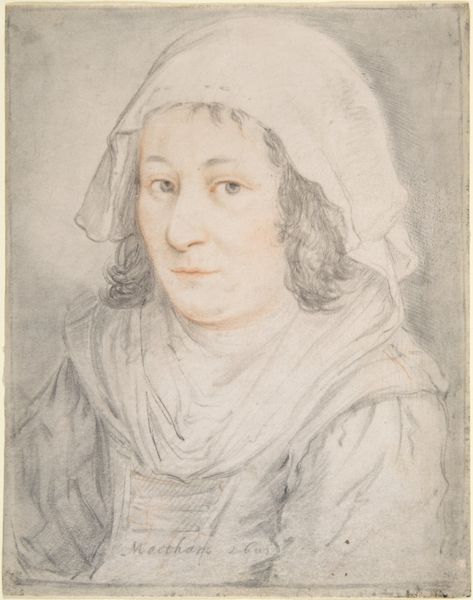
drawing, ink, pencil, graphite
#
portrait
#
drawing
#
charcoal drawing
#
ink
#
pencil drawing
#
sketch
#
pencil
#
graphite
#
portrait drawing
#
northern-renaissance
Copyright: Public domain
Curator: Alright, let’s talk about this intriguing portrait. It’s a drawing of Matthäus Roritzer by Hans Holbein the Elder, created around 1495, likely using a combination of pencil, ink and graphite. Editor: My first thought? A quiet dignity, almost melancholy. It's the shading around the eyes, I think, and the set of his mouth. Makes me wonder what he’s seen. Curator: Holbein really captures a sense of realism here. The details in the face – the lines, the wrinkles – they give us such insight into the sitter's character. The hat, too, it suggests a certain status. Editor: I am fascinated by the materiality of the artwork, the textural contrasts created by Holbein. The sharp precision of the lines delineating the facial features contrasts strikingly with the soft, blurred strokes used for the hair and clothing. Curator: True, true! Holbein's technique really does shine here, doesn't it? The cross-hatching creates a sense of depth and volume. But it is also about Roritzer: he was part of a family of prominent master builders in Regensburg. This was a time of incredible artistic and architectural innovation. Editor: Yes! Holbein meticulously balances the composition using the visual weight of the face on the left and the calligraphic notations on the right to frame his subject. His gaze follows this left-to-right movement. His is looking into the future? Reflecting the artist’s era’s focus on balance, harmony and intellectual pursuits. Curator: It’s remarkable to consider the cultural moment Holbein was working in. There's this fascinating intersection of late Gothic and early Renaissance ideas in his work. Editor: Exactly, and in terms of artistry, consider the Northern Renaissance's interest in capturing minute details with meticulousness and clarity. What some mistake for objectivity, however, shows how much we struggle to appreciate the humanistic side of the artwork. Curator: So, what is your final thought after viewing Roritzer? Editor: To consider his portrait, it offers me insights not only into its historical context but, at the same time, reflects a deep meditation on art’s ability to immortalize the fleeting moment and the human spirit. Curator: Beautifully put! For me, this portrait speaks of human dignity; the resilience of the individual spirit captured through the keen eyes of an extraordinary artist.
Comments
No comments
Be the first to comment and join the conversation on the ultimate creative platform.
